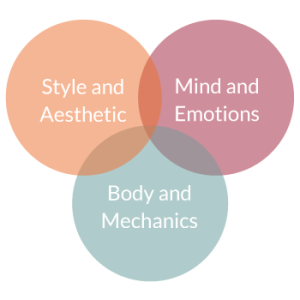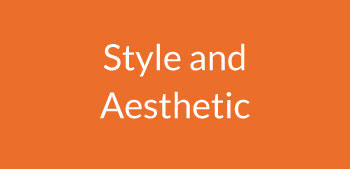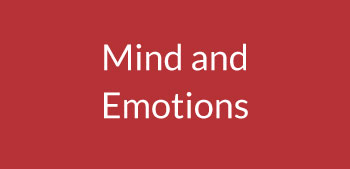Don’t let the noise of others’ opinions drown out your own inner voice. - Steve Jobs
ORIGINALITY
Each person has a uniquely personal story. Training with Voce Vera means to train the body and mind to make one’s vocalized message authentic, clear, understandable, credible and, above all, as consistent as possible with his or her own inner truth.
HOLISM
The voice’s potential resides in the internal muscles of the vocal instrument, in the physical body, the mind, and in the emotional and spiritual parts of each individual. This method facilitates awareness of all these aspects, and teaches students to achieve an overall balance.
INNER GROWTH
Voce Vera’s teaching methods are not only designed to transmit concepts, but to stimulate curiosity and invite a person to discover, to undertake a journey of listening and understanding. Each journey moves at its own pace and each person follows its own path toward discovering how to address personal needs and how to free the voice for the best possible communication and performance.

FORMATIVE AREAS
Vocalizing is a holistic process that starts within a person before his or her voice is heard.
Voce Vera will use different disciplines which have been divided into three areas of training. Each area is made up of individual modules which can be combined together to create a personalized study plan.
An integral part of the method requires that the student - before and after each exercise - listen to, understand, and interpret any strange or unusual physical sensations. The combination of listening to oneself and interacting in a meaningful way with the teacher results in a dynamic training program, flexible and focused.

Modules
- Anatomy and physiology of the phonatory apparatus
- Vocal health and hygiene
- Loosen mental and physical armor to unlock the voice
- Posture and pronunciation
- Breathing, pneumophonic, and subglottic pressure agreement
- Listening to muscles, the voice, the body, the other person, the public
- Understanding one’s own “spoken voice quality”
- Diction, voice projection, microphone technique
- Prevent vocal cord dysphonia
- Voice muscles training
- Vocal timbres and colours
- Loud voice: Belting
- Resolving speaking problems
- Resolving singing problems
- Resolving voice problems for acting and performing

Modules
- Lyrics and text analysis: context, personalities, goals, conflicts
- Writing a subtext
- Keywords
- Emotional analysis
- Authentic interpretation
- Choice of vocal tones
- Effective communication: be credible
- Verbal fluency, active breaks, euphony, poetic rhythm
- Approaching voice, receding voice
- Vocal health and aesthetic freedom
- Nonverbal communication
- A Leader’s Style: pathos, charisma and enthusiasm
- Finding your true voice
- Captivate
- The Magic of Improvisation

Modules
- Silence, listening, awareness, presence, concentration
- Nonverbal language: how the ego influences body language and tone of voice
- Manage stress with breathing and vocal presence
- Emotional balance in front of the public
- Respond under pressure: inner clarity
- Soul Searching
- Accepting differences: freedom to be oneself
- Originality: the inner strength of the performer
- Accepting differences: empathize with others
- Effective communication: tact, diplomacy and interplay
- Personal leadership: truth, ethics, motivation, inspiration
- Competitive and collaborative conversations
- Stage fright: the dialogue between the mind and ego
- Mapping fears
- The”Breakout” Principle (Benson-Proctor)
- Managing worries by turning internal switches
- “The Zone” for excellent performance
- The metaphysics of vocal performance
You cannot teach a man anything, you can only help him find it within himself.
Galileo Galilei
INSTRUCTION
Course Catalog
Any company, school, or institution may request one or more of the lessons on-site. Voce Vera courses can be integrated into existing internal training programs. These collective-experience seminars require a large room where the participants can move easily as well as an audio-video system.Teaching Methods
- Face-to-face in classroom
- Audio / video contributions
- Exercises for the vocal apparatus
- Physical exercises with music
- Mental Exercises
- Pair Exercises
- Sharing experience
- Peer teaching
- Imitation Exercises
- Practical tests
Individual Lessons
Individual training with a practical, flexible, and tailor-made curriculum is ideal for those who need to achieve goals or solve specific problems to improve their communication skills.
Teaching Method
- Face-to-face in studio or home
- Exercises tailored to the vocal apparatus
- Physical exercises with music
- Mental Exercises
- Verbalizing about the experience
- Audio / Video Contributions
- Simulations
- Practical tests
Customized Group Projects
Each training course is highly personalized. The process begins with an evaluation of the context, a needs assessment, and the formulation of strategic objectives. A course outline is then created and carried out with consistent teaching methods. Ongoing fine-tuning of the didactic plan occurs based on the student needs and growth.
Contact Rossana Baroncelli directly for a free initial assessment »